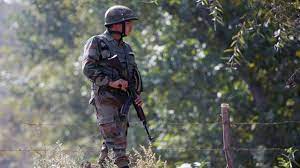CWRC: River dry, water not flowing from TN to Karnataka
As the situation regarding water shortage worsened, the Cauvery Water Regulation Committee (CWRC) on Tuesday denied Tamil Nadu’s proposal for further releases of Cauvery river water from Karnataka’s reservoirs. According to the committee, there is hardly enough water in the reservoirs in both states to supply the demand for drinking water.

“Water in reservoirs is so low that it is only enough for domestic drinking purposes,” TNIE was informed after the 95th meeting by Vineet Gupta, the Chairman of the CWRC.
Because of the low water levels in Karnataka’s reservoirs, even the natural flow is difficult to sustain. He said, “Only 150 cusec of water, as opposed to 1,000 cusec, each day, reach the interstate point Biligundulu according to CWDT. The Cauvery Water Disputes Tribunal’s (CWDT) final ruling, which was altered by the Supreme Court, required the Karnataka government to guarantee the discharge of backlogged water and sustain environmental flow. Tamil Nadu demanded that this be done, but the committee turned down their request.
According to CWDT, Karnataka must guarantee the release of around 1000 cusecs per day, or 2.5 TMC, from February to May in order to maintain environmental flows at Biligundulu.
The Cauvery Water Resources Commission (CWRC) believed that the storage capacity in the designated reservoirs in Karnataka, Tamil Nadu, and Kerala is adequate to meet the needs for drinking water and environmental flows for the remainder of the current water year (2023–24) and the first few months of the following water year (2024–25).
Southern India is experiencing an unbearably hot heat this year along with a severe water problem. Up to 43 reservoirs saw their levels drop to barely 17% of their capacity. The storage in the same time of the previous year was 29%, while the average storage for the previous 10 years was 23% of these reservoirs’ active storage capacity.
According to Karnataka, the water level in the four authorized storages is at an all-time low, barely meeting the essential needs for standing crops, industry, and drinking water. TN said that there was more than enough water in Karnataka’s reservoirs, however. The CWRC’s next meeting is set for May 16.
Kushalnagar, next to Cauvery, is fixated on the water situation.
Madikeri: The river Cauvery that runs across Kushalnagar has dried up, leaving acres of land desolate and unproductive. The appearance of rock shards that are normally buried beneath the river suggests that a serious water issue is imminent. The water issue in Kushalnagar was supposed to be resolved by the massive project AMRUT 2.0, however there isn’t enough water in the river to allow for pipelined supplies.
All Kushalnagar houses would get pipeline connections as part of the Atal Mission for Rejuvenation and Urban Transformation (AMRUT) initiative, which pledged to address the water problem. A plan was developed to extract water from the Cauvery River to provide this supply. To suit the demands of the locals, officials have been obliged to get water from borewells due to the Cauvery River’s lack of availability.
Due to less than 50% of the expected rainfall this year, Kushalnagar is experiencing a serious water problem. Sand bunds were erected across the Cauvery River in front of the Bychanahalli Water Supply and Storage Unit in Kushalnagar in the beginning of March of this year in order to facilitate the pipelined delivery of water to more than 32,000 residents of Kushalnagar Town Municipal Council (TMC). Nevertheless, the river’s water level has further dropped, making it impossible for aquatic life—like fish—to survive.
Ten years before, at an estimated cost of Rs 80 crore, the local government had planned to transport potable water from the Harangi reservoir to Kushalnagar. At the Kushalnagar town panchayat’s general assembly, an action plan was created and presented. But this never materialized,” said local resident K S Murthy.







